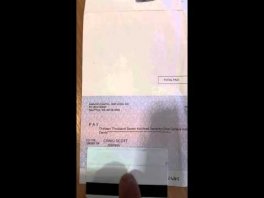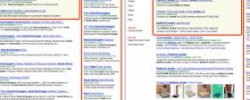Pay-per-click advertising is a key component of many online marketing campaigns. It can also be one of the most expensive ongoing costs in a campaign. Therefore, it’s key that you test your ads regularly, to make sure you aren’t letting conversions slip through the cracks.
To an extent, PPC testing is simpler than many other kinds of A/B tests, partly because there are fewer things to test. But that doesn’t mean any less care and planning should go into preparing and executing these tests.
This is the fourth installment in our A Beginner’s Guide to A/B Testing series. Be sure to check out our previous posts: A Beginner’s Guide To A/B Testing: An Introduction, A Beginner’s Guide To A/B Testing: Exceptional Web Copy and A Beginner’s Guide to A/B Testing: Successful Email Campaigns, and stay tuned for our final installment on testing SEO landing pages.
Deciding What to Test
Pay-per-click ad testing is a bit more streamlined than the other topics we’ve covered in this series. For the most part, you’re going to test one or more of the following four things:
- The headline
- The body text
- The link
- The keywords the ad displays for
The headline is the part that’s going to show up as a link (in blue) in search results. This is usually created to reflect whatever is being offered. It should be short (4-5 words seems ideal, though less is good if it still gets your point across), to-the-point, and include the keyword being searched for if at all possible (on Google, these keywords will appear in bold).
The body text is the equivalent to your page’s description meta tag in organic search results. It should give searchers a bit more of an idea of what you’re offering, and what they’ll get if they click on your link.
Where your ad links can have just as much impact on conversion as the ad itself. In most cases, you’ll want your ad to link to a landing page or product page, not to your home page (unless you only sell one product, and your home page doubles as your landing page). You might also consider having it link to a mini-site designed specifically for use with your PPC campaigns.
Some marketers feel like their ad should show up for any relevant keyword search. But some keywords and phrases will convert better than others. The only way to figure out which ones work best for your products is to test different ones and track the results. When you find certain keyword combinations that convert best for you, focus your marketing dollars there.
Brainstorm a list of possible keywords your target customer might use when looking for your product or company. You’ll want to test not only which keywords seem to work best, but also which keyword/ad combinations get you the best results, as some ads may perform better under specific searches than others.
Once you know which variables you want to test, and have values for each one, you’ll want to make a list of the different tests to run. If you have two possibilities for your headline, and two for your description, then you’ll run four tests (AB, BA, BB, AA). The more variables you come up with, the more tests you’ll need to run. One note: make sure that all of your variables make sense when combined; you may need to remove some possible combinations if they’re repetitive or conflicting.
What Are You Testing For?
A/B testing for PPC ads can be done for a variety of reasons. Sometimes, using PPC to get people to sign up for your newsletter can lead to more conversions down the road, especially for higher-end products. Other times, getting people to buy right away is a better strategy. In either case, you need to have a goal from the start, so that you know how to analyze your results.
Decide, too, whether you’re only going to focus on click-throughs or if you want to focus on the entire conversion process. If your main goal for your PPC campaign is to raise awareness, then click-throughs might be enough. But in most cases, you want to find the highest-converting ads. You may find that some keywords have high click-through rates, but low conversion rates, generally because people searching using those specific terms aren’t yet ready to buy and are only collecting information.
Track and Analyze Your Results
You’ll want to track two primary things: how many click-throughs you get, and how many conversions those lead to. The goal here is to maximize not only the click-throughs, but also the conversions. High numbers in each are obviously going to give you the best ROI. KISSmetrics offers tools to track these conversion funnels, so you can get an accurate picture of what’s working and what’s not, and insight into why that might be.
Like testing web copy, you’ll want to let your test run for at least a few days, and upward of a couple of weeks, depending on how much traffic you get. Make sure you monitor where you ad appears during that time, too. If you’ve bid too low, you may find that your ad is showing up too low in results to be effective. It can also skew results if your ad position shifts too much during the test.












